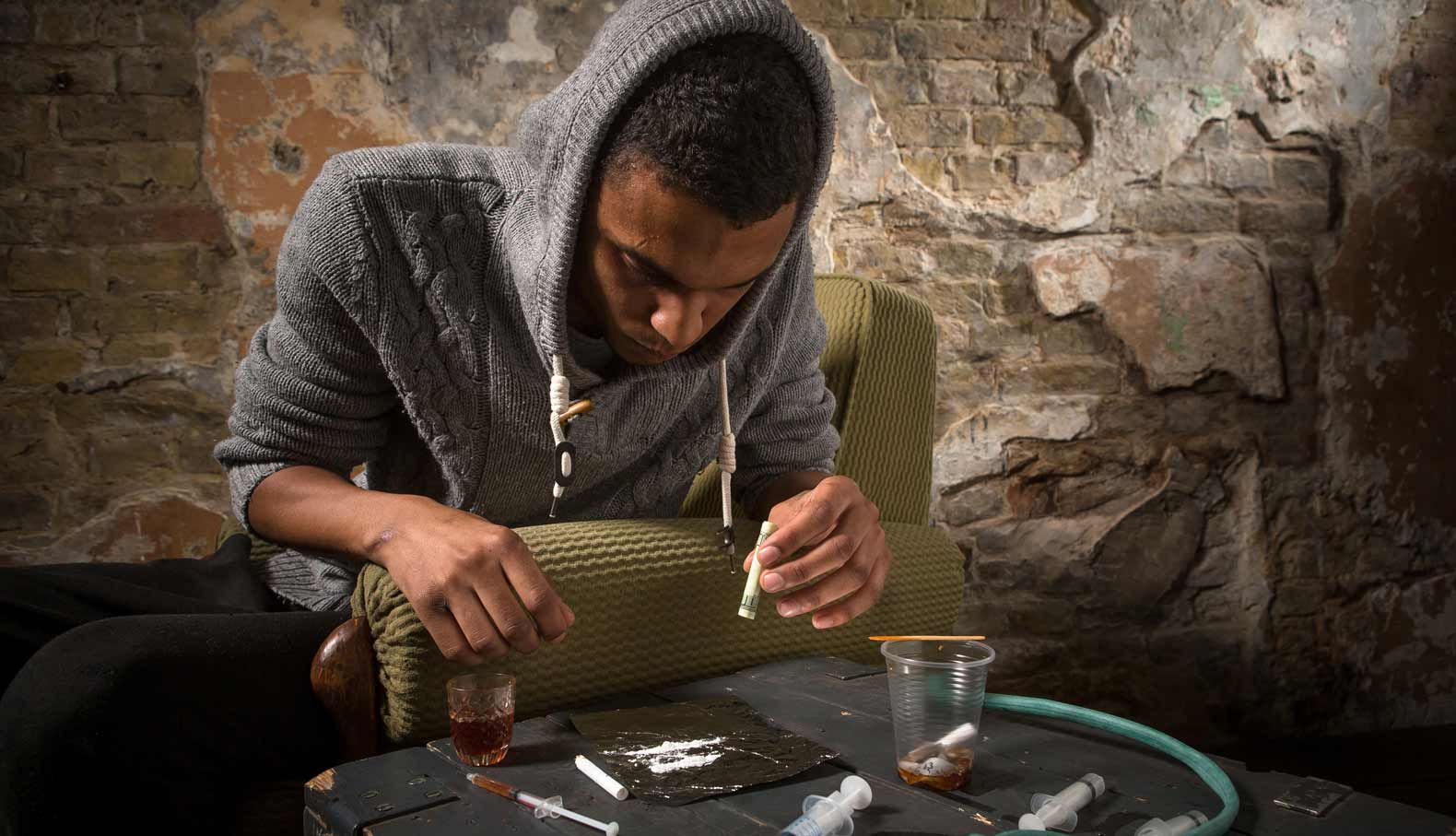
In the 1980s, crack cocaine ran rampant in inner cities as an epidemic that impacted most major cities in America. Many major impacts of that epidemic can still be felt to this day. If you are in need of crack detox, or simply want to know more about this devastating drug, you’re in the right place.
Crack is still one of the most popular illegal street narcotics in America. The fast-acting drug produces almost instant effects, but these effects are also short-lived.
This short-lived high is what keeps users rushing back for the next dose in a revolving door of addiction. In the following article, a crack and freebase cocaine overview is presented to help individuals gain an understanding of this deadly addiction.
Crack and Freebase Cocaine Overview
Crack and freebase cocaine are two smokable forms of this highly addictive drug. However, there are notable differences between these two methods of ingestion. The following section outlines the differences between these two popular methods of smoking cocaine.
Freebase Cocaine
Freebase cocaine is typically made by mixing ammonia and a solvent to smoke this deadly drug. The procedure of mixing these ingredients “frees the base” and separates cocaine from the hydrochloride contained within the drug.
The result is 100% pure cocaine in smokable form. This method of ingestion is incredibly dangerous and also highly addictive. Many users risk overdose when cocaine ingestion includes freebasing.
Many people believe that crack is the same thing as freebase. However, this couldn’t be further from the truth.
Crack Cocaine
Crack cocaine is formed when the drug is mixed with baking soda and heated. This produces a hardened form of the drug that is smoked via a glass pipe.
Crack received the name from the crackling sound it produces when heated. This variation of the drug produces instant effects similar to freebasing and is just as addictive.
There is a potential for the presence of many additives and toxins in crack cocaine. Currently, there are issues with fentanyl found in crack, which was never an issue in the past.
More commonly found toxins include strychnine, arsenic, and ether. Other ingredients found include baby laxatives, thiamine, quinine, tyramine, and magnesium silicate.
Additional Dangers from Smoking Cocaine
It’s important to note that these additional toxins and ingredients may induce harmful side effects in their own right. Sometimes one of the most significant risks of drug consumption isn’t the substance itself but the byproducts contained within.
Regardless of whether users smoke freebase cocaine or crack, long-term use produces withdrawal during abstinence. Withdrawal from crack and freebase cocaine is similar and incredibly unpleasant.
Withdrawal from Crack and Freebase Cocaine
The withdrawal from crack and freebase cocaine can be quite intense for individuals suffering from cocaine abuse disorder. A wide range of symptoms exist and make it difficult for a user to remain abstinent and current in their recovery.
Gaining a proper understanding of withdrawal from crack and freebase cocaine is important to assist and support any recovering user. Withdrawal from these activities include the following side effects:
- Anxiety
- Exhaustion
- Paranoia
- Unpleasant dreams
- Stomach cramps
- Intense sweating
- Nausea
- Irritability
- Mood swings
- Agitation
- Cravings
- Shaking
There is also a significant risk of suicide involved with crack withdrawal. Depression and crack are often linked when users are engaging in recovery.
Crack and Depression or Suicide
Because of the intense feelings of pleasure that crack may cause, havoc is played on the neurons and receptors of the brain. After long periods of use, it may be difficult for former users to feel pleasure and joy naturally.
Because of these difficulties, many users may dive deep into the throes of depression. Unable to find a way out, it’s not uncommon for crack addicts to turn to suicide as a means of escape.
Depending on the stage of withdrawal an individual is in, symptoms may vary. The following section outlines the timeline for crack withdrawal.
Timeline for Crack Withdrawal
- 24-72 Hours: Many users will begin to feel the effects of withdrawal almost instantly. However, the most notable symptoms manifest after a period of 24-hours. Insomnia, fatigue, irritability, and intense cravings are present during the first stage of withdrawal. Certain users also report hallucinations and paranoia during this period, which eventually subside.
- Week 1: The first week’s trouble sleeping and lack of motivation are the two main symptoms. Although many of the physical symptoms subside after 72 hours, the mental side effects may be the hardest to cope with.
- Week 2: The cravings during the second week may be the most intense. This is also the period in which depression starts to become most prevalent. Strong, negative emotions may plague the user, and anxiety may also become an issue.
- Weeks 3 and 4: During the third and fourth weeks, the body is becoming used to the lack of cocaine. However, mood changes may still occur, as the mind is still adjusting. Normally the physical craving ceases by this time, but depression and anxiety may continue to linger.
One of the biggest questions surrounding crack addiction is whether underlying conditions cause addiction or does addiction cause mental conditions. Dual diagnosis and crack recovery become important to identify underlying issues.
Dual Diagnosis and Crack Recovery
Dual diagnosis and crack recovery should go hand in hand. Dual diagnosis involves a mental health professional identifying and diagnosis the presence of underlying issues that may cause crack addiction.
Initially, users may be unaware that they suffer from certain conditions. However, almost subconsciously, users turn toward the drug to mask the conditions. When dependence sets in, no attention is paid to the underlying condition, and using becomes second nature.
Through the help of counselors and psychiatrists, these issues may be corrected or remedied. Many dual diagnoses include the following conditions:
- Depression
- Panic disorder
- Bipolar disorder
- Psychosis
- Schizophrenia
- Intense emotional or physical trauma
- Multiple types of abuse
Another important element of recovery includes post-acute crack withdrawal. This is when having an available professional can greatly benefit the individual recovering from cocaine abuse disorder.
Post Acute Crack Withdrawal
Post acute crack withdrawal is a period after abstinence that includes the return of many withdrawal symptoms and cravings. However, these symptoms are short-lived and can easily be remedied.
Medication is prescribed for post-acute crack withdrawal, but therapy may be the most effective. There are multiple types of treatment for recovery from crack.
Therapy Types for Crack Addiction
Treatment for recovery from crack is critical for extended periods of recovery. Therapy types for crack addiction include the following options:
- Inpatient rehabilitation treatment includes a secured environment with constant medical and mental health professionals on hand. Patients have access to counselors and psychiatrists and gain education regarding addiction and underlying causes. Normally options for inpatient rehab are 30, 60, and 90 days.
- Live-in rehabilitation is similar, but patients live in a more home-type environment. There are normally multiple patients under one roof; individuals are able to engage in everyday activities like work and contact with family and loved ones. Users participate in random drug testings as well as daily group meetings. Counseling sessions may take place on an outpatient basis.
- Outpatient rehab takes place when an individual remains in their home environment. They attend counseling sessions and group meetings on an outpatient basis. However, there are requirements surrounding meetings with counselors. Outpatient rehab usually involves a set of goals and benchmarks surrounding recovery.
Regardless of the type of treatment and recovery options, access to mental health counseling is one of the most important elements. Education regarding crack addiction via group meetings and counseling sessions is important as well.
Understanding Crack Addiction
A firm understanding of crack addiction is vital for an efficient and long-term recovery period. A quality rehabilitation center will place emphasis on addiction, triggers, and other elements involving crack use.
When users understand what triggers them to use, chances of relapse are lowered significantly. If there is no understanding of what causes addiction, this may turn into a common occurrence of treating the symptoms and not the disease.
Aftercare is Crucial to a Healthy Recovery
Continued recovery after rehabilitation is important and has a strong support system. Any recovering user’s support system should include a family dynamic, a job, and hobbies outside of work.
It’s important for loved ones and family to remain active in a user’s recovery on a permanent basis. Individuals involved with recovery should encourage users to take all measures to promote a healthy recovery. This includes driving them to group meetings and engaging them regarding addiction education.
Long Term Recovery from Crack is Possible
Long-term recovery from crack addiction is a realistic goal and is accomplished through a mixture of all of the previously mentioned elements. However, it’s important to understand that relapse remains on the heels of any users with any addiction.
Remaining proactive in recovery for a lifetime period is the only way to ensure success. An individual that has substance abuse disorder issues will deal with these issues for a lifetime. However, the difference is whether they actively engage in using. Through abstinence, strong support, and attention to recovery, all individuals suffering from cocaine abuse disorder have a fighting chance of living a normal and productive life.
At Circle of Hope Treatment Center, we’ve helped countless numbers of individuals suffering from cocaine abuse disorder regain their lives back. We specialize in the treatment of the negative side effects of crack and cocaine detox and have trained professionals on hand at all times. Contact a member of our Admissions Department to obtain the information required to begin one of our programs.

